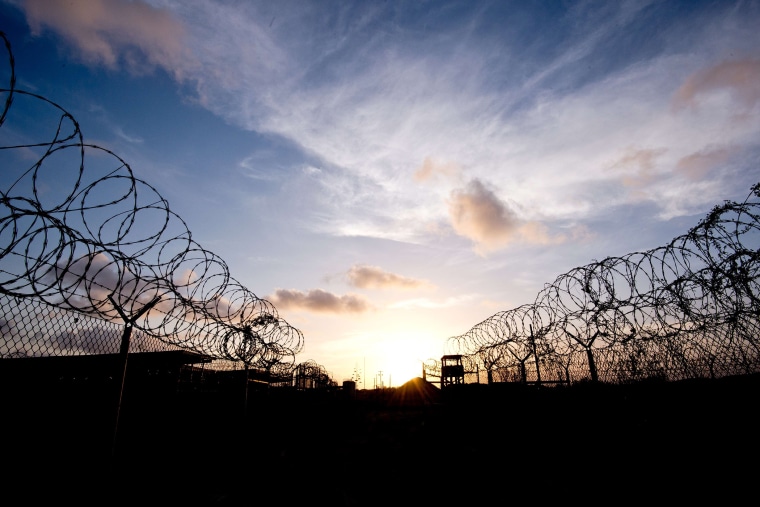President Obama has been awfully busy of late, tackling a variety of measures since the midterm elections seemingly delivered a major setback to his governing agenda. But as the latest releases from the detention facility at Guantanamo Bay make clear, Obama's not done yet.
As of two weeks ago, the administration had cleared 13 prisoners for transfer this calendar year, including seven since early November. Over the weekend, the pace quickened once more.
The United States transferred six detainees from the Guantanamo Bay prison to Uruguay this weekend, the Defense Department announced early Sunday. It was the largest single group of inmates to depart the wartime prison in Cuba since 2009, and the first to be resettled in South America. The transfer included a Syrian man who has been on a prolonged hunger strike to protest his indefinite detention without trial, and who has brought a high-profile lawsuit to challenge the military's procedures for force-feeding him.
Guantanamo has been a point of contention between the White House and outgoing Defense Secretary Chuck Hagel, with the Pentagon chief being slow to approve transfers.
With Hagel stepping down upon confirmation of his successor, the dynamic has obviously changed.
There are now 136 detainees remaining, 67 of whom have been cleared for transfer. If those releases move forward, and security conditions are met, that would leave just 69 men at the prison. As the New York Times report added, those 69 "are either facing charges before a military commission or deemed unable to be tried but too dangerous to release."
Of course, for the White House, which has spent several years trying to close the facility, only to be blocked by Congress, the gradual reduction in the number of detainees inches towards the broader goal: the smaller the prison population, the less inclined lawmakers may be to invest in its continued existence.
